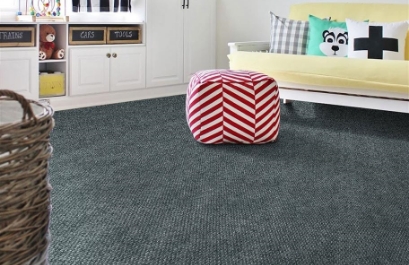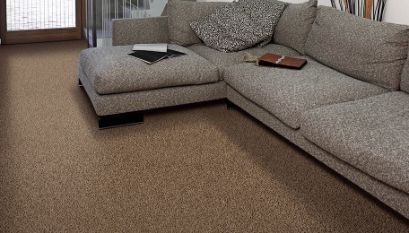Broadloom Carpet Guide: Everything You Need to Know
Thinking about replacing your hard flooring with some broadloom carpet rolls? There are lots of advantages for swapping out that cold, hard floor for something warmer, softer, and homier.
Before you make the big leap to carpet rolls, you probably have some questions that you want to get answered. We can help with that!
With this guide, you’ll get the lowdown on everything broadloom, from pros and cons to installation methods, so you can find your favorite carpet.
Before you make the big leap to carpet rolls, you probably have some questions that you want to get answered. We can help with that!
With this guide, you’ll get the lowdown on everything broadloom, from pros and cons to installation methods, so you can find your favorite carpet.
What Is Broadloom Carpet?

Broadloom carpet is another name for the wide rolls of carpet you see everywhere from homes to offices and movie theaters. It got its name because it was originally woven on a very wide loom. Today, broadloom carpet is manufactured and sold in large carpet rolls that come in a standard size. Broadloom is the traditional wall to wall carpet.
All that said, broadloom also comes in a variety of fiber textures such as loop, cut, frieze, and cut and loop. So what do all these styles mean? Let’s break it down.
All that said, broadloom also comes in a variety of fiber textures such as loop, cut, frieze, and cut and loop. So what do all these styles mean? Let’s break it down.
Loop
Loop carpet is also known as Berber carpet. This means the fibers are short loops woven into the back of the carpet. The fibers remain uncut. Loop carpet is great for high traffic or commercial environments because it’s very durable, easy to clean, and hides dirt well.
Cut Pile
Cut pile carpet is most common in homes. The cut fibers are smooth to the touch, making them more comfortable, but also more easily crushed.
For this reason, cut pile carpets are not optimal for commercial areas. These carpets often show footprints or vacuum trails. Frieze and Saxony style carpets are both cut piles.
For this reason, cut pile carpets are not optimal for commercial areas. These carpets often show footprints or vacuum trails. Frieze and Saxony style carpets are both cut piles.
Cut and Loop
A cut and loop style carpet features some fibers that remain uncut and looped, and some of the fibers are tufted. This creates distinct patterns on the surface that are used to create designs. Keep in mind that during install you will need to match up the carpet patterns while seaming any pieces together.
Frieze
Frieze carpets are a subgroup of cut fiber carpets with twisted fibers. The higher the TPI (twists per inch) number is, the more durable a carpet might be. Since Frieze is a twisted style, it typically has a higher TPI and is more durable than other cut carpets. Frieze carpet is also incredibly soft.
Features of Broadloom Carpet Rolls

- Eco-Friendly: Many carpets are made from recycled materials such as plastic bottles or fishing nets, making carpet a great choice to benefit both you and the planet.
- Stain-resistance: Finally, you can stop worrying about stains! Some carpets feature pretreated fibers that won’t soak up stains when something is inevitably spilled.
- Waterproof options: Is waterproof carpet really a thing? Yes, and it’s awesome for homes with pets. The carpet fibers wick moisture up to the surface to be blotted away, while the waterproof backing protects your carpet padding and subfloor.
- Attached padding: Cut a step out of the installation process by purchasing carpeting with the padding already attached!
Pros and Cons of Broadloom Carpet
What are the advantages of broadloom carpet?
You might be wondering what benefits broadloom has over other flooring options, or even over other carpets, like carpet tile. These benefits of broadloom carpet are sure to give you a boost of confidence when buying your new carpet.
- Seamless: Broadloom carpet has a seamless appearance. With carpet tile, you’re likely to have a tiled look.
- Your room looks larger: Broadloom carpet makes your room look larger. Because it doesn’t have any seams and often the carpet is a uniform color or texture, broadloom carpet seems to stretch on forever in a room, making it appear larger and more spacious.
- Softness: Broadloom carpet is the plushest carpet available. You can lounge on it, play with the kiddos, and walk around in total comfort.
What are the drawbacks of broadloom carpet?
Broadloom carpet is wonderful. However, that doesn’t mean there aren’t some disadvantages of choosing broadloom over another flooring. Let’s break it down.
- Installation: Many people choose to hire a professional to install broadloom carpet rolls because the process can be labor-intensive and require special tools. If you really want to install it yourself, there are some carpets with pre-attached padding that allow you to skip a step.
- Replacement: If your carpet is ever damaged, you have to replace the whole thing. Compare that with carpet tile, where you can just replace whatever tiles are damaged and then move on with your life.
- Wasted material: Installation also tends to leave behind excess materials. That means you’re buying more than you need. Patterned carpets leave behind the most excess.
How to Install Broadloom Carpet Rolls

The truth is, broadloom carpet is tricky to install on your own. You’ll probably have to hire a professional. However, if you do decide to tackle the challenge, you’ll need a few extra tools.
You can install carpet two different ways: stretch-in and with adhesive. Both methods require a stretcher (which can be rented), knee kickers, and melt tape for seaming. Read up on how the two methods work to decide if you want to hire a professional.
You can install carpet two different ways: stretch-in and with adhesive. Both methods require a stretcher (which can be rented), knee kickers, and melt tape for seaming. Read up on how the two methods work to decide if you want to hire a professional.
Stretch-In
With this installation, you adhere the carpet seams together using melt tape or another adhesive. The carpet is then stretched in place using a power stretcher or a knee kicker. You will attach the carpet to wall tracks that secure the stretched carpet. Stretched carpet is less likely to sag or have air bubbles when installation is complete.
Adhesive
With this installation, you glue the carpet to the floor. You must also have a knee kicker or a stretcher in order to ensure a smooth carpet, free of air bubbles.
To prevent air bubbles, you have to lay the carpet from the center, and slowly work outwards to the edges of the room. You may also roll the carpet with a 75 lb. roller in both directions if it’s directed by the manufacturer.
To prevent air bubbles, you have to lay the carpet from the center, and slowly work outwards to the edges of the room. You may also roll the carpet with a 75 lb. roller in both directions if it’s directed by the manufacturer.
How to Clean and Maintain Broadloom Carpet
The good news is that carpet rolls are pretty easy to take care of. If you follow these steps to ensure your floor looks great for years to come.
- Sweep and vacuum frequently, at least once a week, to remove dust and dirt.
- If you spill something, clean it up as soon as possible using a clean cloth and water.
- To remove stains, use a cleaning product recommended by the carpet manufacturer.
- Every couple of years or so, deep clean the carpet with a hot water extraction-cleaning machine (I.E. carpet cleaner). This will keep it looking its best.
Where to Use Broadloom Carpet

Carpet is popular for use in the home, but that’s not the only place it can thrive. Here are a few other applications for broadloom carpet rolls that you might not have considered.
Commercial Carpet
Virtually all commercial carpets are Berber because it’s designed to hold up so well to high traffic. Typically, commercially-rated carpets have a lower pile, meaning they are thinner. This allows the carpet to hold up to heavy traffic without matting or crushing.
Outdoor Carpet
Yes, you can also enjoy carpeting in the great outdoors! Outdoor carpet is designed to resist damage from fading, weather, and pets.
You can install it almost anywhere that has a hard surface – patios, garages, basements, balconies, and more. No more sitting on hard concrete. You can have softness outside too!
You can install it almost anywhere that has a hard surface – patios, garages, basements, balconies, and more. No more sitting on hard concrete. You can have softness outside too!
Home Theater Carpet
You’ve got your screen, your seating, and an awesome audio setup. The final touch is a durable carpet that can absorb all that surround sound.
If you’re looking for home theater carpet, we’ve got it for you. Our home theater carpet is all commercially graded, so it can stand up to anything. Not only that, carpet is the best flooring for a home theater.
If you’re looking for home theater carpet, we’ve got it for you. Our home theater carpet is all commercially graded, so it can stand up to anything. Not only that, carpet is the best flooring for a home theater.
Why Choose Broadloom Carpet?

At this point, maybe you’ve read everything there is on carpet, area rugs, and every flooring under the sun. Why should you choose broadloom? Here are its best qualities to give you some inspiration.
- Softness: Broadloom carpet is the softest flooring you can own. No other flooring will ever be as soft as broadloom carpet. It’s a comfort you won’t want to miss.
- Seamless appearance: Broadloom also makes your room look larger. Because there are no seams to break up your line of sight, carpet is the easiest way to make a small room look large.
- Style: With so many patterns, colors, and textures to choose from, broadloom carpet offers virtually limitless style options.
- Warmth: Nothing compares to the warm comfort of carpet. You don’t have to suffer cold floors in the winter like you would with tile, vinyl, or wood.
- Sound quality: Unlike hard surfaces, carpet absorbs sound instead of bouncing it around the room. This is a big plus.
Conclusion
Congratulations! You now know a lot about broadloom carpet. Buying the perfect carpet requires some research, but hopefully, with this information in mind, we can make your decision a little easier.



